But None Of The Challenges Posed By Our Warming Climate Has Loomed Larger In The Popular Imagination

But none of the challenges posed by our warming climate has loomed larger in the popular imagination than sea-level rise. With global populations and wealth heavily concentrated in low-lying coastal cities, humanity has been preoccupied by the prospect of the oceans reclaiming the high points of our civilization. And for good reason: The best available models suggest that 37 million people currently live in places that will be below high tide by 2050 — in an optimistic low-carbon-emissions scenario.
Or rather, that’s what such models suggested before this week. On Tuesday, a new study revealed that those alarming statistics — which had gotten so many of us all worked up about our favorite cities’ impending doom — were wildly inaccurate.
The actual impacts of sea-level rise are going to be much, much worse.
Listen, folks, few understand the enormity of what is happening, nor how fast it’s occurring, and, look, I don’t count myself among those few.
The rest of us do not realize the catastrophe that is happening right now.
Maybe that’s not fair to say: the people of California probably understand all too well. Even if their home is not on fire, certainly they see the hellish red glow in the sky and cannot avoid the acrid smell of wildfire smoke.
For sure, the indigenous folk who subsist on whale meat understand the crisis, since the bowheads they hunt have not appeared. None of them. They are way out to sea, trying to avoid the warming oceans and underwater heat waves.
The people of Key West, who have endured a “king tide” flooding their city streets for 60+ days straight, probably think there’s a big problem. Some of them, no doubt, are hanging on to the foolish belief that this tide is going to subside – it’s not – it’s rapid sea level rise.
It’s not our fault though, that we do not know … did not know, because, everything we have been told, the stuff that has made it out of the media in the past decade or so, has all been based on these same “optimistic low-carbon-emissions scenarios.”
This is not the world we live in. We live in the high-emission catastrophic scenario. We were shown these, when we were shown anything at all, but we were told these catastrophic emission scenarios would never, ever – couldn’t possibly – ever be so.
Yeah, well, we were wrong about.
More Posts from Green-notebooks and Others
Me, waking you up at two am: hey, do you ever think about how we live in a culture of rejecting our local “wild places” in favor of fetishizing and romanticizing the distant and different?
There’s this overwhelming rhetoric we’re fed that the only nature worth protecting is Grand and Huge and most of all Somewhere Else.
Nobody thinks about the wetland behind their local Walmart that is in Desperate need of protection, or the little remnant prairie in a cemetery, because they’re too focused on the abstract and often flawed concept of “wilderness” somewhere else.
There is nothing wrong with wanting to travel to see something new and unique, but the way I hear people talk about our own backyard, the way the last remnants of what we have here are ignored or outright rejected, breaks my heart.
My professor has spent his entire career in the Midwest trying to protect wetlands from housing developments and new superstores, but he almsot always loses, not just because the developers have money, but the community doesn’t care enough to do anything about it.
Afterall, what’s a few old oak and birch trees in a little puddle of a swamp compared to miles of marsh in Scandinavia? What’s a grassy hill to a distant mountain range?
Well, to the duck, to the heron, to the bluebird, and to precious few people, I’d say it’s Everything.
I love to travel myself, and I know people probably don’t know that when they say “why is our wildlife/plant life etc. so lame” that they’re contributing to an attitude of rejecting what unique beauty we do have,
But
I hope one day people can see the wonder nearby and fight to protect it. I hope there’s something left to protect.
Anyway…..where do u keep your cups I want some water.

What is the value of a street where people can walk safely? Why build streets that are constructed with the needs of people in mind, not just the needs of cars?
“Again and again, when we look at streets oriented toward people we find that they are more economically productive than any other style of development.”
Many people concerned with pedestrian safety and “walkability” care about these issues because they feel that walking is good exercise or that walkable places are more attractive or that walking is better for the environment than driving.
These are all valid arguments and may convince some of those reading this article that walkability is important. But what I want to talk about today isn’t an argument based on values or aesthetics. It’s an argument based on pure dollars and cents — one that should convince people with a myriad of values and political leanings that people-oriented places must be a priority if we want our communities to be economically prosperous.
Again and again, when we look at streets oriented toward people — that is, streets where walking is safe and enjoyable, that people are drawn to visit on foot, and where fast and extensive car traffic is not the #1 priority — we find that they are more economically productive than any other style of development. This is particularly true when we compare people-oriented places to car-oriented places—think of that stretch of your town that effectively does everything possible to discourage walking and biking, including a street with multiple wide lanes to ensure fast car movement, acres of parking, and minimal (if any) sidewalks, bike lanes and crosswalks.
Walkable streets, on the other hand, encourage business activity, generate greater tax revenue per acre and offer a higher return on investment than auto-oriented streets.
hm, i feel like there’s a big problem when we try to visualize a sort of “solarpunk”-like society where we assume that every place a gonna be a grassy, tree-fillled, green city and that’s like fine and all but it’s very inauthentic to the diverse landscapes of our planet. for example, i live in southern california and ive seen trees and grass but i’ve also seen desert with cacti and bushes and dry land. when we associate our future, our “progress”, with a certain landscape we are not treating the land with the respect it deserves. deserts, plains, mountains, marshes are all apart of the world we live in and we need to invision a future with those lands too
also with all this in mind, a lot of this aesthetic and line of thinking can be damaging to indigenous communities. thinking the desert is just “empty space” and thinking the plains should be replaced with forests go hand-in-hand with colonialist ideology. no land is empty land, it is always someone’s home. we need to make space for indigenous people in our solarpunk, cottagecore, vegan, etc. ideologies if we ever want to truly make progress and not perpetuate the same shit with a different brand on it

“The project was designed to transform a wide, automobile-oriented thoroughfare to a pedestrian-friendly, neighborhood center.
Travel lanes were reduced from five to two while adding five modern roundabouts, improved sidewalks, medians, landscaping, and increased angle parking. Traffic calming measures were installed on less busy side and parallel streets to avoid potential traffic diversion.“
Here’s the before and after:


“Pedestrians once had 70 feet of pavement to cross at intersections. With the roundabouts, they now cross 12–14 feet of pavement at a time with refuge islands in the middle”
“due to the 15 mph design speed of the roundabouts and traffic calming, many bicyclists feel comfortable riding with traffic on La Jolla Boulevard“
“The traffic count remained approximately the same (23,000 vehicles per day before, 22,000 after), but walking, bicycling, transit use, on-street parking and retail sales all climbed to much higher levels, the city reports. Retail sales rose 30 percent and noise levels dropped 77 percent. Because traffic moves slower, businesses report higher visibility.
As a result of the roundabouts and traffic calming, speeds were reduced from 40–45 mph to 19 mph, according to city transportation engineers. “The once busy boulevard has been transformed into a slow-paced street with roundabouts, landscaped street dividers and diagonal parking,” notes the LaJolla Light
Traffic crashes fell by 90 percent. The project has helped revitalize La Jolla Boulevard, acting as a catalyst to several new mixed-use developments, a 139-unit condominium development, and a major drugstore.
“Motorists,” Burden reported in The San Diego Union- Tribune in February 2017, “understandably dreaded this change before it was made. But they found that instead of waiting 24 seconds for a pedestrian to cross 70 feet of road, they now only wait 3–4 seconds, or don’t have to wait at all. Businesses that feared the loss of customers arriving in cars actually improved their trade. … Today motorists are getting to their destinations in less time, because they aren’t stopping.”“
(I’ve added bold for emphasis; the above sections are taken from different parts of the article, click through the link for the whole thing)
This goes to show that designing for a better pedestrian experience is not only safer, but also good for the local economy.

Solarpunk Activities for the Socially Anxious
- Read up on the philosophical background(s) of solarpunk. I’ve got a bibliography page if you are looking for more. - Figure out which plants that are indigenous or endangered in your area. Read about their history (and if you can make seed bombs.) - Enjoy Alan Watts lecture on nature - Make a herb drying rack by using string and push pins. You can eat, burn or drink tea from the herbs. - Consider growing food from your scraps - Watch a Ted Talk on Conservation - Draw nature, real or imaginary. Take time to map out fantasy lands. (Think about it as an environmental vision board) - Consider if composting might be right for you - If you have houseplants, learn how to propagate them (or even just take the time to learn more about them…their history, and how best to care for them). If you do want to learn how to propagate, I suggest starting with succulents. They are hardy, fun, and fairly cheap. -Learn how to Talk to Trees with Charis Melina Brown - A National Geographic explainer on how trees talk to each other. - Listen to this amazing, free, nature meditation with Jessica Snow
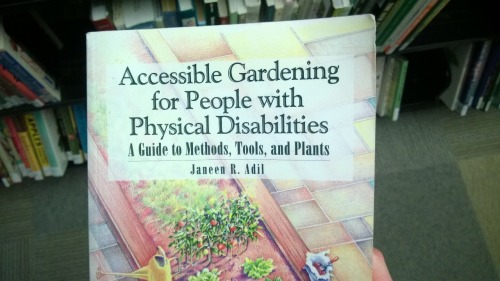
this book is worth more than a dozen restaurants that grow their own microgreens on the roof
Can't afford to buy things for your garden?
*Re-posting, with new information
A store-bought bag of topsoil, a roll of landscaping fabric, or a bag of cedar chips doesn’t go very far if you have a large garden or a very limited budget. Here are some ways to create the materials you need for a beautiful, organic, productive garden, by both re-directing household waste, and foraging in your local area. I use a lot of these tricks in my garden to make it almost completely free for me to continue growing new things, and expanding the workable area every year!
For soil
Save your food scraps to create a rich compost for growing veggies and amending your soil. There are numerous options for every size of dwelling and yard. Small space solutions such as Bokashi and vermicompost work indoors and don’t produce bad smells, so you can keep them underneath the sink.Worm towers, compost heaps, and outdoor compost bins are a great solution if you have more space. The more you add, the more rich, nutritious material you can make for your garden. I like composting because it means I don’t have gross smelly garbage bags to deal with, because food waste is diverted. It seems like a lot of work at first, but it actually saves time, money, and transportation.
Seaweed or kelp is one of the best things for your garden, with over 70 essential nutrients, and acting as a weed barrier and a moisture-retentive mulch. I collect seaweed nearby on the beach with my bike trailer, or, when I go for a walk I bring a little home with me each time. It’s an absolute miracle for your soil.

Worm tower
Fertiliser
There are three things that are essential for plant growth. These are nitrogen for leaves and vegetation (N), phosphorus for roots and shoots (P), and potassium for water movement, flowering, and fruiting (K). Commercial fertilisers will give the relative concentrations of each of these compounds with and “NPK” rating. Plants like tomatoes also need calcium to produce healthy fruit. You can create amendments for your garden and soil at home so that you do not have to purchase fertiliser.
For nitrogen
Grass clippings contain 4% nitrogen, 1% phosphorus, and 2% potassium (NPK = 4-1-2).
Human urine contains 12% nitrogen, and it’s sterile. Dilute before adding directly to plants.
Legumes such as beans, clover, peanuts, and alfalfa fix inorganic nitrogen into the soil with mycorrhizal organisms and nodules on their root systems. Plant these crops every few years in rotation with others to renew the soil organically.
For phosphorus
Human urine is also a great source of phosphorous and trace amounts of potassium.
Ground up bones or shells add a slow-release phosphorous to the soil
Had a baby recently? Bury the placenta in the garden.
For potassium
Hardwood ashes
Composted banana peels
For calcium
Break down all of your eggshells, or seashells you have found, in a plastic bucket, using vinegar. This creates a soluble calcium solution you can add to a watering can.
Soil Acidity/Alkalinity
Many plants are particular about what the soil pH should be.
To make soil more acidic: add oak leaves, pine needles, leaf mulch, urine, coffee grounds or sphagnum.
To make soil more alkaline: add wood ash, shell, or bone.
Mulch
Mulch is decomposing organic matter that adds nutrition to the soil, while simultaneously keeping out weed growth and retaining moisture. It also attracts worms, fungi and other beneficial creatures to your soil. Free sources of mulch include:
Leaves
Garden waste
Grass clippings
Straw (often straw bales are given away after being used for decoration in the fall. You can also plant vegetables directly in straw bales using a technique called straw bale gardening).
Wood chips (if you can borrow a wood chipper after you’ve collected some wood you can have attractive wood mulch for free)

Straw bale garden
Landscaping fabric
When mulch isn’t enough to keep the weeds down, many people opt for landscaping fabric. It can be quite expensive and inorganic-looking. Free solutions that both attract worms and can be replaced in small segments as they break down include:
Newspaper*
Cardboard*
Egg cartons*
Printer paper, looseleaf, etc. in thick layers*
*try to make sure you are using paper that has vegetable-based dyes, so you aren’t leeching toxins into the soil.
Soil density/drainage
If your soil is compacted and you have plants that require low levels of water, or excellent drainage, add sand. I don’t recommend stealing it from the beach, but ask around and you’d be surprised at how easy it is to get for free. Sawdust also improves drainage. Adding organic matter and mulch encourages worms, who also till and aerate compacted soil.
If the area still needs drainage, dig a hole and fill it with bricks or rocks to create a “dry well”
For drainage in pots, add crushed bricks, terra cotta pot fragments, packing peanuts, small stones, marbles, orsand to the bottom under the soil layer. I find these in construction sites, on craigslist, or at flea markets.
Pots and growing containers
If you have space, raised beds are a great no-dig way to establish growing space. If you are pressed for space (like working on a balcony) there are many cheap or free options for container gardens.
Creating raised beds allows you to build up the soil without digging. Free ways to do this include using rocks or lumber (like my DIY “lasagna garden” made with the sheet composting technique), using the “wattle“ method with sticks and posts you have found, using discarded straw bales, old bricks,paving stones, cinder blocks or really anything else you have lying around.
Hugelkutur raised beds, which fix carbon and provide drainage, can be made by stacking sticks and untreated wood, and then piling soil or compost over it. (Thanks milos-garden)
Rubber tire gardens retain heat in the night and allow for great drainage. They can also be painted in fun ways.
Herb spirals (here is mine: 1, 2, 3) can be built with stones, bricks, and other found materials.
I often use old cooking pots, barbecues, teapots, or other found objects as planters.
Making wooden planters is easy, and scrap or salvaged wood is also easy to come by. I’m not a fan of using wooden pallets for DIY projects, but they are also a free source of lumber for things like planters.
If you can track down peat moss, cement, and vermiculite, you can make an easy Hypertufa planter in whatever shape you would like, provided you have a form in which it can dry.
I’ve made hanging gardens out of soda cans.
You can build a self-watering container with a 2L pop bottle.
Start seeds in eggshells
Make biodegradable pots out of newspapers.
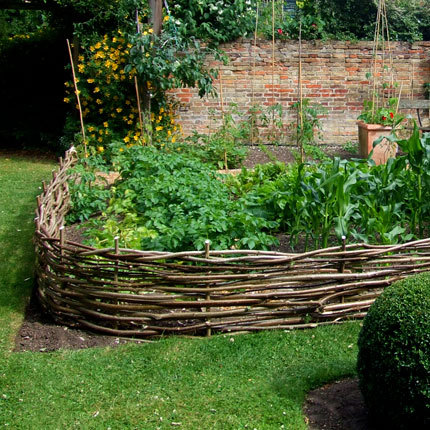
Wattle raised beds

Rubber tire gardens

Hugelkultur

An herb spiral
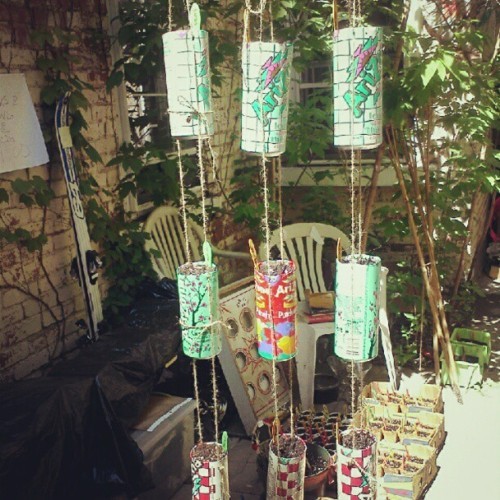
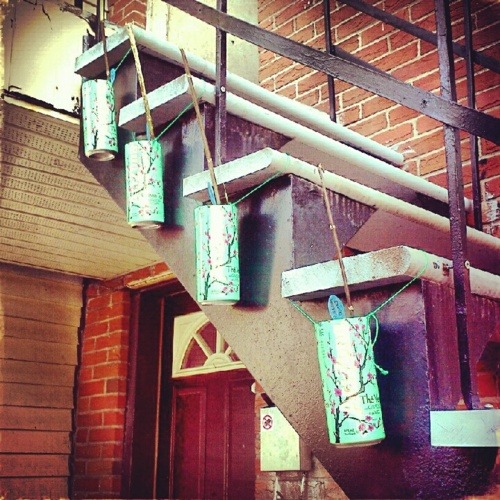
Hanging gardens in cans (2)
Trellises and supports
Many plants need external support, such as stakes of trellises, to thrive.
Rebar can almost always be salvaged cheaply or free and makes a great trellis, arch, or purgola
Build trellises and supports out of the pliable young stems of plants like willow
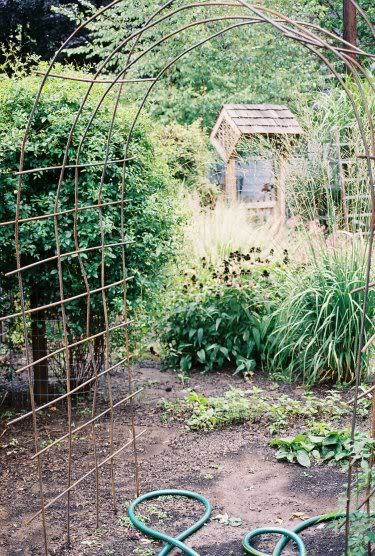
Rebar trellis/arch

Living willow arch/trellis
Paving
Paving often requires a foundation of sand or another stable and well-drained substrate, and a covering of stones, bricks, or other weatherproof elements. Slowly collect stones over time, or free paving stone fragments to create a mosaic-type walkway. Often people give these things away on craigslist. I made a patio and fireplace out of free salvaged bricks, for example.

Salvaged garden walkway
Greenhouses and cold frames
Here is a gallery of greenhouses made out of salvaged windows and doors
A cold frame is easy to make with salvaged lumber, and plastic sheeting.
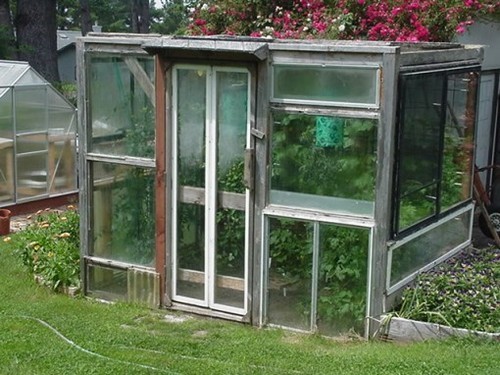
Window greenhouse
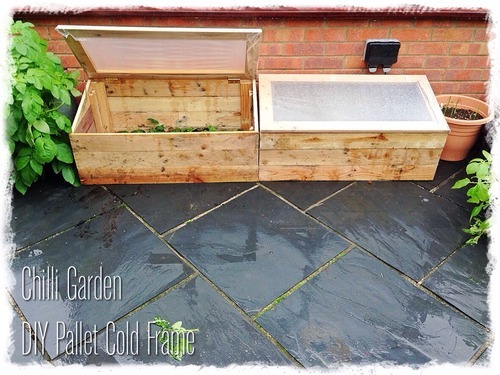
Palet cold-frame
Seeds and plants
Swap seeds with other gardeners
If you see a plant you like at someone’s house, ask for seeds or cuttings
Save seeds every year and build a library of options. Here is a great guide to seed saving.
Save seeds from foods you like from the grocery store: consider growing peanuts, ginger, garlic, peppers, or a walnut tree: all of these and more can be planted from store-bought produce.
Learn to take cuttings. There is a tonne of info on the web about basic cutting propagation, layering, (like I do with rhododendrons) air layering, and numerous other techniques to take clones of plants you like. This saves going to a nursery and shelling out big bucks for all the variety you want.
For cuttings, willow tea and honey are great rooting hormones/antiseptics/anti-fungal agents, which can save you $40 if you were thinking of buying commercial rooting hormone.
You can root cuttings in a potato! (See my methods for rooting “borrowed” plants here)
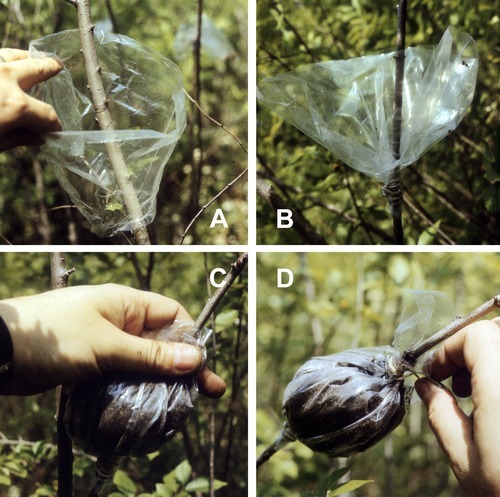
Air layering
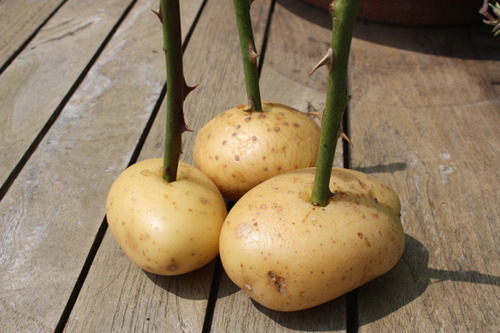
Rooting cuttings in potatoes
—-
I hope this helps you build your garden outside of the usual capitalist channels! It can be a cheap or free hobby if you are willing to think outside the box, and maybe put up with things that don’t look as clean or crisp as a hardware store catalogue. If you have any further ideas, please add them! The more information the better.

“Is it possible to turn things around by 2050? The answer is absolutely yes,” says Kai Chan, a professor at the Institute for Resources, Environment and Sustainability at the University of British Columbia.
Many scientists have been telling us how the world will look like, if we don’t act now. However, others, like Chan, are tracking what success might look like.
They are not simply day-dreamers either. They aren’t being too optimistic. They are putting together road maps for how to safely get to the planet envisioned in the 2015 Paris Agreement, where temperatures hold at 1.5 degrees Celsius higher than before we started burning fossil fuels, this article from July states.
“Three decades is enough to do a lot of important things. In the next few years—if we get started on them—they will pay dividends in the coming decades,” says Chan, the lead author of the chapter on achieving a sustainable future in a recent UN report that predicted the possible extinction of a million species.
Making these changes won’t mean years of being poor, cold and hungry before things get comfortable again, the scientists insist. They say that if we start acting seriously NOW, we stand a decent chance of transforming society without huge disruption.
No doubt, it will take a massive switch in society’s energy use. But without us noticing, that’s already happening. Not fast enough, maybe, but it is. Solar panels and offshore wind power plummet in price. Iceland and Paraguay have stripped the carbon from their grids, according to a new energy outlook report from Bloomberg. Europe is on track to be 90 per cent carbon-free by 2040. And Ottawa says that Canada is already at 81 per cent, thanks to hydro, nuclear, wind and solar.
Decarbonizing the whole economy is within grasp. We can do this.
“If we have five years of really sustained efforts, making sure we reorient our businesses and our governments toward sustainability, then from that point on, this transition will seem quite seamless. Because it will just be this gradual reshaping of options,” Chan says, adding: “All these things seem very natural when the system is changing around you.”
A brief and ugly summary of surviving cold climates
For visitors and writers alike.
You were never meant to be here. Never forget this. You are an ape of the equator, built to run the savannah and swim in tropical waters. Whatever terms and conditions your body has, they are void here. Mother nature never certified to function in a Death World.
Enduring the cold is never a matter of “how much” as much at it is “how long”. Think of it as the water levels of the vieogames you have played. No matter what equipment enables you to remain longer, you can’t stay there indefinitely. The coat that keeps you warm and toasty for three hours in -15 is enough to keep you functional for an hour of -40.
Whatever the locals say, listen to them. Err to the side of caution if you must. You may not endure what they can endure, but you SURE AS FUCKING NOT cannot survive what they say cannot be endured.
That being said, alcohol is a filthy fucking liar and so is anyone who offers it to you. The warmth it gives is an illusion, and a sign of damage. You are worse off feeling comfortable with a mouthful of whiskey as you are freezing your gonads off stone cold sober.
Winter tires. Studded winter tiers are a MATTER OF LIFE AND DEATH when you drive on a frozen road. That being said, whatever the locals tell you that your car will need to run as theirs do, take it. Taking the risk of being pranked is worth survival, and you can always stab their tires in the spring if they were shitting you.
Eat. For the love of god, make sure that you eat. Heavier meals might be unpalatable at first for someone used to lighter nutrition, but maintaining bodily warmth in a cold climate takes up a lot of energy, and you will feel tired and drowsy for a long while shile your metabolism adjusts to producing more heat than Mother Nature ever intended. The skinny people in your party are especially vulnerable, ensure their well-being on a regular basis.
If you have a smartphone/other essential technology on your body, keep them close to your body to keep them warm. They were not designed to be frozen any more than you were.
Sleep is death. SLEEP IS DEATH. Never, ever stop to rest in the cold, if you do not have the means to make a fire/otherwise produce heat. The cold tires you out because keeping warm takes energy, but taking a rest will not return your energy. If you feel the need to sit down and rest because you are tired because of the cold, call for help. This is not a hyperbole, if you feel like you are too tired to go on in a cold climate, CALL A FUCKING AMBULANCE. If you fall asleep in the snow, you will not wake up. Hypothermia can and will literally kill you.
Avoid skin-to-snow-contact if you can. It hurts because you were not supposed to do it. Consider ice to be like acid. Touching is bad for you.
Feel free to add to the list if you feel like I missed something.
-
 notwiselybuttoowell liked this · 3 years ago
notwiselybuttoowell liked this · 3 years ago -
 knarsisus reblogged this · 3 years ago
knarsisus reblogged this · 3 years ago -
 wewantclimateactionnow reblogged this · 3 years ago
wewantclimateactionnow reblogged this · 3 years ago -
 ultratruebluebird liked this · 4 years ago
ultratruebluebird liked this · 4 years ago -
 nect-ari-ne liked this · 4 years ago
nect-ari-ne liked this · 4 years ago -
 lovinthemelanin reblogged this · 5 years ago
lovinthemelanin reblogged this · 5 years ago -
 lovinthemelanin liked this · 5 years ago
lovinthemelanin liked this · 5 years ago -
 gaywarrren liked this · 5 years ago
gaywarrren liked this · 5 years ago -
 spinningorigins reblogged this · 5 years ago
spinningorigins reblogged this · 5 years ago -
 wewantclimateactionnow reblogged this · 5 years ago
wewantclimateactionnow reblogged this · 5 years ago -
 wewantclimateactionnow reblogged this · 5 years ago
wewantclimateactionnow reblogged this · 5 years ago -
 yourenvironmentjunkie-blog liked this · 5 years ago
yourenvironmentjunkie-blog liked this · 5 years ago -
 bloodwaterblood liked this · 5 years ago
bloodwaterblood liked this · 5 years ago -
 beforevenice liked this · 5 years ago
beforevenice liked this · 5 years ago -
 mysoulismylighthouse reblogged this · 5 years ago
mysoulismylighthouse reblogged this · 5 years ago -
 mysoulismylighthouse liked this · 5 years ago
mysoulismylighthouse liked this · 5 years ago -
 peachesarekindapink reblogged this · 5 years ago
peachesarekindapink reblogged this · 5 years ago -
 fandom-and-fanficlover-a-lot2005 reblogged this · 5 years ago
fandom-and-fanficlover-a-lot2005 reblogged this · 5 years ago -
 fandom-and-fanficlover-a-lot2005 liked this · 5 years ago
fandom-and-fanficlover-a-lot2005 liked this · 5 years ago -
 corazondearroz reblogged this · 5 years ago
corazondearroz reblogged this · 5 years ago -
 jen56larknight liked this · 5 years ago
jen56larknight liked this · 5 years ago -
 jakeblakecornflake liked this · 5 years ago
jakeblakecornflake liked this · 5 years ago -
 coco-code reblogged this · 5 years ago
coco-code reblogged this · 5 years ago -
 fascher liked this · 5 years ago
fascher liked this · 5 years ago -
 planet-earth00 reblogged this · 5 years ago
planet-earth00 reblogged this · 5 years ago -
 planet-earth00 liked this · 5 years ago
planet-earth00 liked this · 5 years ago -
 tistheweirddays liked this · 5 years ago
tistheweirddays liked this · 5 years ago -
 aussiebotanist liked this · 5 years ago
aussiebotanist liked this · 5 years ago -
 boredofboredomyy liked this · 5 years ago
boredofboredomyy liked this · 5 years ago -
 whodominou liked this · 5 years ago
whodominou liked this · 5 years ago -
 prtty-littr-psyco liked this · 5 years ago
prtty-littr-psyco liked this · 5 years ago -
 topsy-turvy-tip-top-hat reblogged this · 5 years ago
topsy-turvy-tip-top-hat reblogged this · 5 years ago -
 topsy-turvy-tip-top-hat liked this · 5 years ago
topsy-turvy-tip-top-hat liked this · 5 years ago -
 meatiermeatball reblogged this · 5 years ago
meatiermeatball reblogged this · 5 years ago -
 living-in-a-fantacy-land reblogged this · 5 years ago
living-in-a-fantacy-land reblogged this · 5 years ago -
 living-in-a-fantacy-land liked this · 5 years ago
living-in-a-fantacy-land liked this · 5 years ago